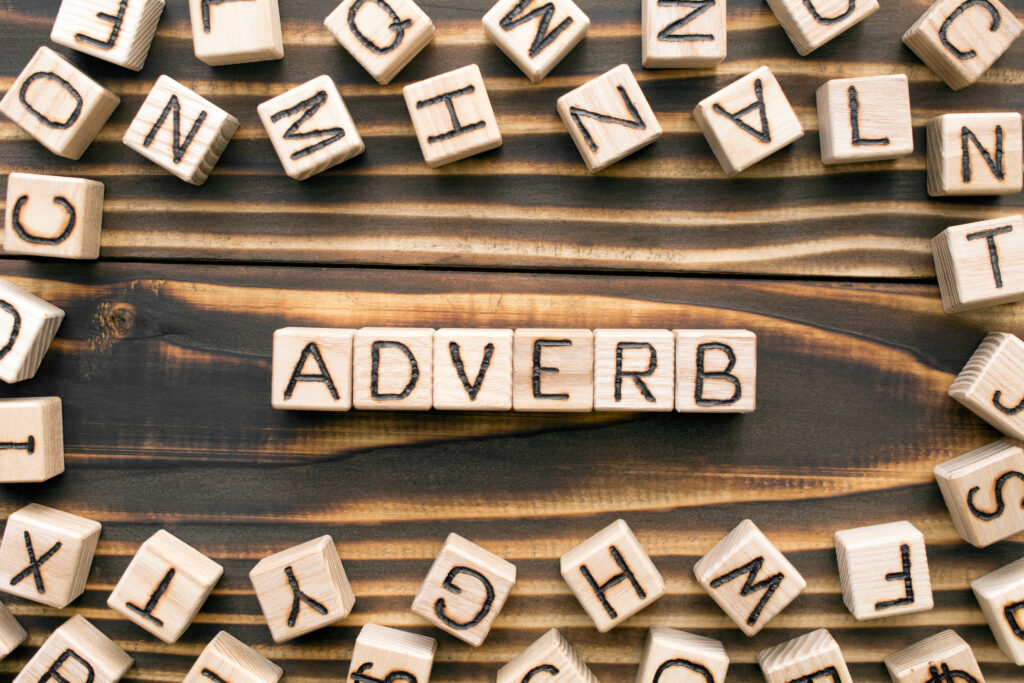Hello lovely students! Are you looking to improve your writing or sound more formal when speaking? If you are, then look no further than this article on everything to do with conjunctive adverbs.
What are conjunctive adverbs, you say?
Find out more below for a better understanding of them.

What are conjunctive adverbs and why do we use them?
Conjunctive adverbs (also known as adverbial conjunctions) are phrases in a speech used to connect words in two clauses or sentences. Think of them as being a bridge to link and connect ideas.
They can demonstrate many things but are often used for cause and effect, contrast, illustration, summarisation, addition and comparison, all of which you can see on a table later in the article.
We use conjunctive adverbs specifically in these three ways:
1) to form a connection between two independent clauses in sentences.
2) to link two sentences.
3) to interrupt an idea or phrase.
Top tip: remember to distinguish conjunctive adverbs from the coordinating conjunctions for, and nor, but, or, yet, and so (FANBOYS).
Conjunctive adverbs illustrate the transition between ideas, whereas coordinating conjunctions place equal emphasis on what is being merged.
Now that you know why we use these valuable types of adverbs and what they demonstrate, why don’t I show you what some of them are?

Common conjunctive adverbs
Look at the table below for a list of common conjunctive adverbs and their functions.
| nonetheless | therefore | consequently | accordingly |
| however | instead | rather | despite |
| typically | namely | for example | for instance |
| briefly | In short | In summary | In conclusion |
| additionally | In addition | furthermore | moreover |
| comparatively | likewise | similarly | alternatively |
Of course, these are not all the conjunctive adverbs. There are many more, but I have taken the most commonly used ones. Look below at the list of conjunctive adverbs to see what each of them demonstrates. I’ve sprinkled in a few more too. Can you spot them?
1) Cause and effect
nonetheless, therefore, consequently, accordingly, hence, thus, then.
2) Contrast
however, instead, rather, comparatively.
3) Illustration
typically, namely, for example, for instance.
4) Summarisation
briefly, in short, in summary, finally, in conclusion.
5) Addition
additionally, in addition, furthermore, moreover.
6) Comparison
comparatively, likewise, similarly, alternatively.
Did you spot the extra conjunctive adverbs? Let me know in the comments below.
Placement of conjunctive adverbs
You now know some conjunctive adverbs. Let’s look at their placement within phrases and sentences.
As illustrated above, conjunctive adverbs are used in three different ways (making a connection between two independent clauses, linking two sentences and interrupting an idea or phrase).
However, each conjunctive adverb is placed differently in a sentence depending on the way it is used. Let’s take a closer look at this.
1) A connection between two independent clauses in sentences
To join independent clauses, writers usually put a semicolon after the first independent clause, then the conjunctive adverb, then a comma and then the second independent clause.
So, the sentence structure is this: independent clause + ; + conjunctive adverb + , + independent clause.
I wanted to spend the day skiing; however, it was too hot, and the snow had melted.
Asha kept on missing her deadlines; therefore, she was fired from her job.
There must be a close relationship between the two main clauses to use the conjunctive adverb in this way.
2) Linking two sentences
Conjunctive adverbs can also be at the beginning of a sentence and must be followed by a comma. This use is punctuated differently from the previous use.
The structure is this: first sentence. + conjunctive adverbs + , + rest of second sentence.
Amy practised the violin every day. Moreover, she practised the piano. She never got a bad grade in music.
I had loads of good friends in school. In short, I was popular.
3) Interrupting an idea or phrase
Finally, conjunctive adverbs can also be placed in the middle of a sentence when used for interruption. This use is more flexible regarding where the conjunctive adverb should be placed.
The structure is this: first clause, + , conjunctive adverb + , + second clause.
Commas must be used on either side of the conjunctive adverb. Let’s look at some example sentences.
The Doctor advised me to take supplements, for example, two times a day.
People tend to forget, nonetheless, when they have a busy schedule.
Remember, commas and punctuation are essential to use conjunctive adverbs in a grammatically correct manner.

Rules of conjunctive adverbs
Here are just a few rules to recap conjunctive adverbs.
1) Use a semicolon and a comma with the conjunctive adverb to link two clauses.
2) Use a comma after the conjunctive adverb if it is at the beginning of a sentence.
3) Use two commas to enclose the conjunctive adverb if it is used for interruption.
4) Lastly, and perhaps most importantly, ensure the conjunctive adverb you use has the correct function.
Is that everything?
Absolutely not! Check out more engaging English content on my YouTube channel English with Lucy. You’ll ace your next writing assignment in no time.